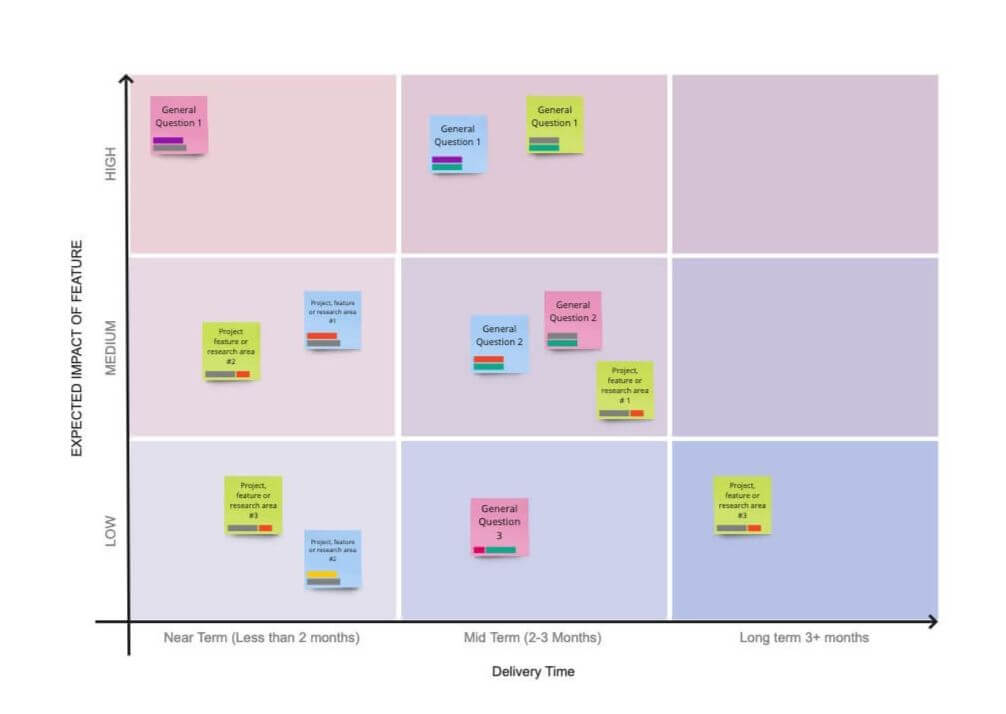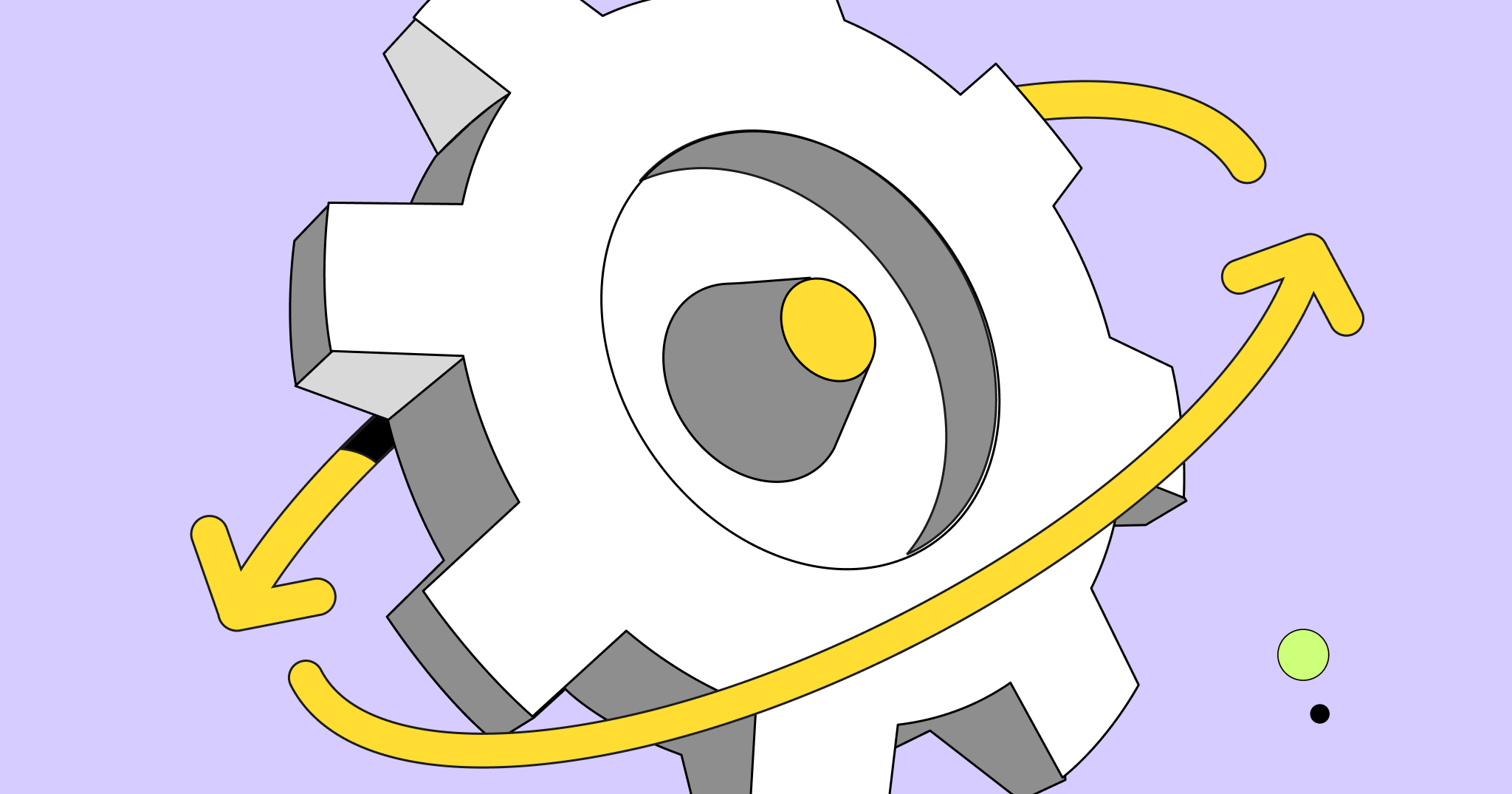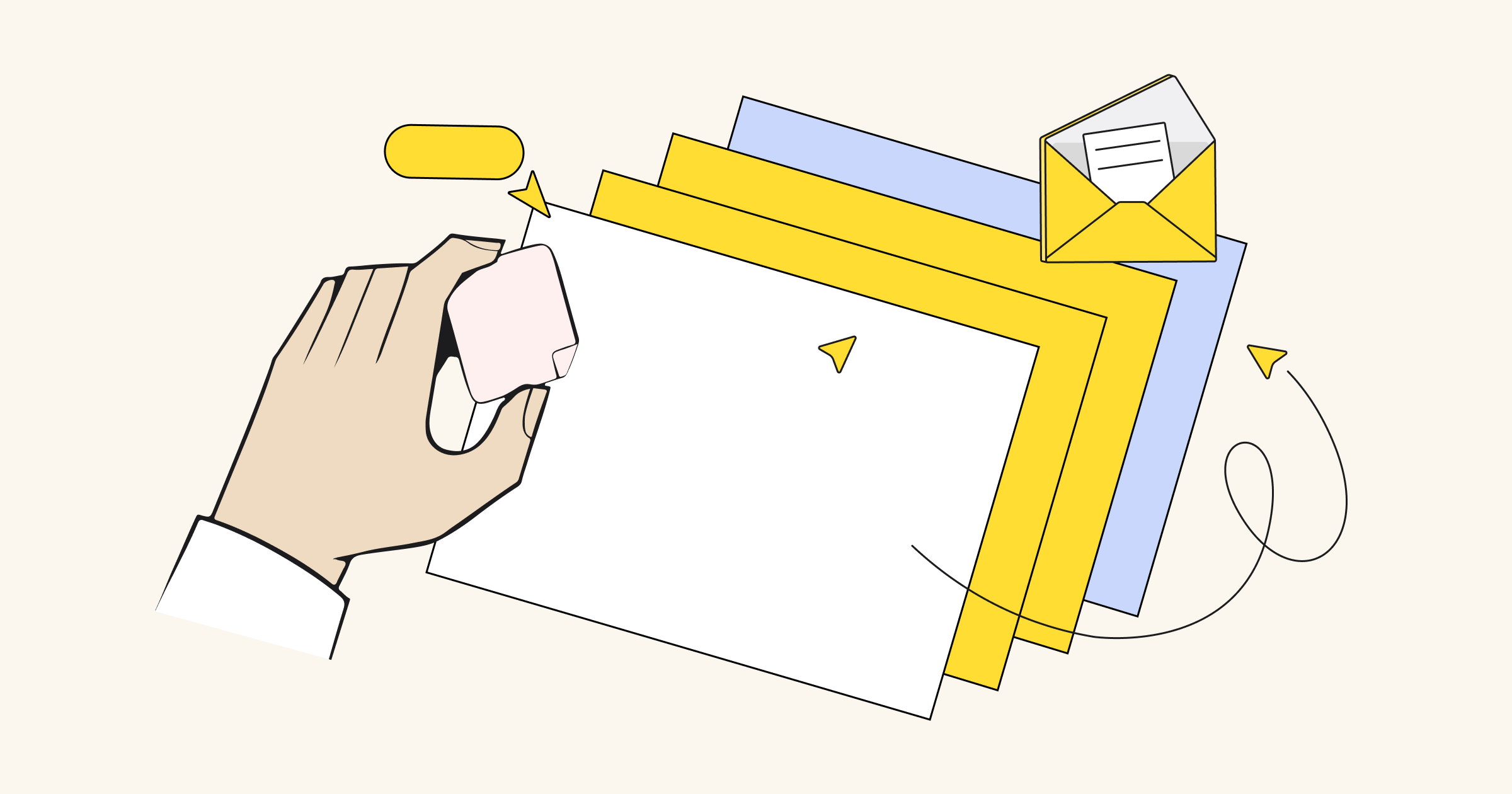As UX researchers, we take our cues from the product development organization on where we should spend our time. We need access to the big picture. Without that, we risk being brought in too late on projects, unable to influence product and business decisions.
To fill this need, our team at Kira conducted a workshop with product managers and designers to collaboratively create a research roadmap — and we’re sharing our process in this post. With a well-thought-out roadmap, you’ll be able to align your work with the product org’s plan to deliver value to customers.
Preparing for the workshop
You will need:
- Miro board
- Video conferencing tool (we used Zoom)
- ~45 minutes
We prepared our Miro board in advance, taking inspiration from Dan Wilkinson’s Brand Development & Refinement template in Miroverse and Miro’s 3×3 Prioritization Method template. We designed three activities to identify research needs, determine timelines, and understand the impact of each request. We gave each activity a dedicated area on the Miro board using frames, digital sticky notes, and grids.
Learn more about Miro
To get buy-in from product managers for a workshop like this, run the idea by them prior to sending out an invite. If you get any resistance, position research as something that will help them make decisions for their work.
Keep in mind that not all workshop attendees will be research experts. Provide a short description of what your team does and the types of research you conduct — for example, Discovery Research, Tactical Research, and Post-launch Research — on the Miro board to serve as a reference point during the workshop.
Running the workshop
Before you kick off any activities, remind your teammates why you’ve asked them to come together. Clearly and succinctly define the purpose, terms, and definitions that may be used, and most importantly, be clear on what the final output will be: a UX Research roadmap.
Once everyone is on the same page, it’s time to dive in.
Identify roadmap items that need new research (~20 min)
First, ask product managers to list all of the roadmap items they believe require research for the next quarter or year. Encourage them to provide details of what they want to know about that feature.
For example, if a product manager says they would like research on in-app notifications, they may want to know if users wish to receive in-app notifications at all or how often they prefer to receive them. These additional questions can serve as thought starters that provide valuable direction for your research.
Have participants organize their questions by product line, working group, or any way that makes sense to your company. Spend some time talking about why the product managers feel each request or question is important.

Get clear on timelines (~20 min)
Next, you’ll want to get clear on when product managers need research insights for upcoming releases.
At Kira, we asked product managers to fit their research requests into the following timeframes: 2 months or less, 2-3 months, or 3+ months. Since it’s not realistic for every request to be completed in the short term, product managers will start to see the need for prioritization. Discuss with your team which requests could be pushed out a bit.

Prioritize research requests based on expected user impact (~15 min)
This final workshop activity aims to understand the expected impact the features or services you’re researching will have. Before you start, be aware that product managers may get hung up on the term “impact.” Remind them that this is not the impact of the research you and your team will deliver, but rather the expected impact the delivery of features, functionality, or services will have on your users and customers.
Ask them to categorize their questions and requests based on the type of research that’s required (discovery, tactical, or post-launch) and the expected impact (high, medium, or low).

Synthesizing everything into a roadmap
Now that you have all of the information required to develop a UX Research Roadmap, it’s time to gather with your research team to decide what to work on and when.
At Kira, we started by organizing the research requests using two dimensions — relative impact of the feature for users and delivery timeline — in the same way that we helped the product managers organize requests during the workshop. We wanted to make sure high-impact, urgent requests were prioritized by our team.

Assign each request to individual members of your team. When each researcher has an idea of what’s on their plate, have them speak to product managers to get a more detailed understanding of what the research needs are for each of the items listed.
You’ll want to consider a few important questions based on the unique needs of your team:
- What’s a realistic balance of tactical, discovery, and post-launch research that your team can take on?
- How long does it take you to recruit people for research?
- How confident are you that each request is properly labeled with the type of research needed (e.g., do product managers think they need tactical research when they really need discovery research)?
You can create the roadmap itself using the workflow tool that works best for your team.
Sharing and updating the UX research roadmap
Now it’s time to share your roadmap with the larger group. This is a great time to review important definitions (e.g., types of research and terms used in the workshop) and remind everyone how you collaboratively arrived at the final roadmap.
To keep your roadmap updated, check in with product managers on a monthly or quarterly basis to understand if priorities have shifted and if there are new things on their radar.

Final Thoughts
By asking a set of targeted questions and doing relatively simple activities with our teammates in product management, we gained a more holistic picture of how what we do as researchers will impact product decisions. With this information, we’ve been able to plan more effectively and deliver useful insights that genuinely shape the product.
I would like to thank Heidi Mok, Senior Product Designer at Kira Systems for the facilitation coaching that she provided me over the course of 2020. This workshop was made possible by her thoughtful and patient coaching.




